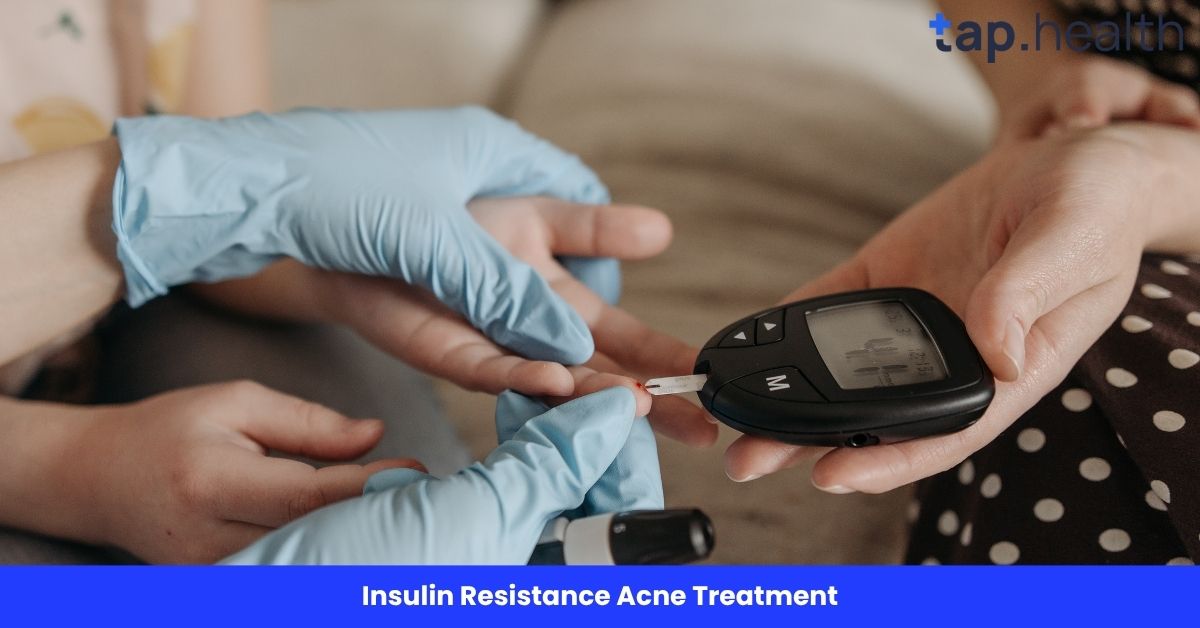If you’ve ever been bitten by a mosquito, you probably didn’t stop to wonder, “Was that a dengue mosquito or just a regular one?” But knowing the difference could literally save your life—especially if you live in or are traveling to tropical or subtropical regions where dengue fever is common.
Many people assume all mosquitoes are the same. They buzz, they bite, and they’re annoying. But not all mosquitoes carry dangerous diseases. In fact, only a few specific types are responsible for spreading illnesses like dengue, Zika, chikungunya, and yellow fever.
So, what really sets a dengue mosquito apart from a “normal” mosquito? Is it size? Color? Behavior? Bite time? Breeding habits?
In this guide, we’ll break down every key difference—clearly, simply, and thoroughly—so you can identify, avoid, and protect yourself from the real threat: the dengue mosquito.
Let’s start with the basics.
What Is a Dengue Mosquito?
The term “dengue mosquito” doesn’t refer to just any mosquito. It specifically points to female mosquitoes of the Aedes species, mainly Aedes aegypti and, to a lesser extent, Aedes albopictus (also known as the Asian tiger mosquito).
These mosquitoes are the primary carriers (or “vectors”) of the dengue virus. When a female Aedes mosquito bites a person already infected with dengue, it picks up the virus. Later, when it bites someone else, it can transmit the virus to that new person.
Important note: Only female mosquitoes bite humans. They need blood to develop their eggs. Male mosquitoes feed only on plant nectar and pose no threat to humans.
Now, when people say “normal mosquito,” they usually mean common nuisance mosquitoes—like those from the Culex or Anopheles genera. These may bite you and cause itching, but they don’t typically spread dengue (though Anopheles does spread malaria, and Culex can carry West Nile virus).
So right away, the biggest difference isn’t just appearance—it’s what diseases they carry.
How to Visually Tell a Dengue Mosquito from a Normal Mosquito
At first glance, all mosquitoes look similar: tiny, six-legged, with long proboscises (the needle-like mouthpart). But if you look closely—especially at their body markings—you can spot key visual differences.
Dengue Mosquito (Aedes aegypti) Appearance
- Color: Dark black or dark brown body.
- Stripes: Distinctive white-silver stripes on its legs and a lyre-shaped (harp-like) white marking on its thorax (upper back).
- Size: About 4–7 mm long—roughly the size of a pencil tip.
- Posture: When resting, it holds its body parallel to the surface, with its head down and rear end slightly raised.
Common “Normal” Mosquitoes (Culex or Anopheles)
- Culex mosquitoes:
- Brown or dull gray body.
- No bright stripes—legs are uniformly colored.
- Rest with their body angled upward, like a ramp.
- Common in urban areas; breed in dirty water like sewage or stagnant drains.
- Anopheles mosquitoes:
- Lighter brown with pale spots on wings.
- Rest with their abdomen tilted upward at a sharp angle.
- Known for spreading malaria, not dengue.
- Prefer clean, freshwater breeding sites like ponds or rice fields.
Quick visual tip: If you see a mosquito with bold white bands on its legs, it’s very likely an Aedes—and possibly a dengue carrier.
When Do Dengue Mosquitoes Bite vs. Normal Mosquitoes?
This is one of the most practical differences—and one that affects your daily habits.
Dengue Mosquito Biting Time
- Daytime biters: Aedes aegypti is most active during early morning (just after sunrise) and late afternoon (a few hours before sunset).
- They rarely bite at night—so if you’re getting bitten while sleeping, it’s probably not a dengue mosquito.
- They are aggressive biters and often target ankles, elbows, and other exposed skin.
Normal Mosquito Biting Time
- Culex mosquitoes: Primarily night biters. They’re the ones buzzing around your ears while you sleep.
- Anopheles mosquitoes: Also bite at night, typically between 10 p.m. and 2 a.m.
- Both prefer darker, quieter environments for feeding.
Why this matters: If you’re outdoors during daylight hours in a dengue-prone area, you need protection—even if you’re not used to daytime mosquito bites.
Where Do Dengue Mosquitoes Live Compared to Normal Mosquitoes?
Habitat is another major clue. Where a mosquito breeds tells you a lot about its species—and its danger level.
H3: Dengue Mosquito Breeding Sites
Aedes aegypti is a “container breeder.” It doesn’t need large ponds or swamps. Instead, it lays eggs in small, artificial containers holding clean, stagnant water—often right around your home.
Common breeding spots include:
- Flower pots and saucers
- Discarded tires
- Buckets, drums, or barrels
- Gutters with trapped water
- Pet water bowls
- Bottle caps or coconut shells (yes, even tiny amounts!)
These mosquitoes thrive in urban and suburban areas because humans provide endless water containers.
H3: Normal Mosquito Breeding Sites
- Culex mosquitoes: Prefer polluted or dirty water—like sewage drains, septic tanks, or clogged gutters with organic debris.
- Anopheles mosquitoes: Need clean, freshwater bodies—such as ponds, marshes, rice paddies, or slow-moving streams.
Key takeaway: Dengue mosquitoes breed close to where people live, often indoors or in backyards. That’s why community clean-up efforts are so critical in dengue prevention.
Do Dengue Mosquitoes Fly Far?
Another surprising fact: dengue mosquitoes don’t travel far.
- Aedes aegypti typically flies only 50–100 meters in its entire life.
- It stays close to its breeding site and human hosts.
- This means if there’s a dengue case in your neighborhood, the risk is highly localized.
In contrast:
- Culex mosquitoes can fly up to 2 kilometers.
- Anopheles may travel 1–2 km in search of blood meals.
So, controlling breeding sites within your own property can significantly reduce your risk of dengee.
Can You Get Dengue from Every Mosquito Bite?
Absolutely not.
Only infected female Aedes mosquitoes can transmit dengue—and even then, only under specific conditions:
- The mosquito must have previously bitten someone who was in the viremic phase of dengue (when the virus is in their bloodstream).
- After biting that person, the mosquito needs 8–12 days for the virus to develop inside its body before it can pass it on.
- Then, when it bites a new person, transmission can occur.
Most mosquito bites—even from Aedes—do not result in dengue. But in areas with active outbreaks, the risk rises sharply.
Also, you cannot get dengue directly from another person. It only spreads through mosquito bites.
What Diseases Do Each Type of Mosquito Carry?
Not all mosquitoes are equal when it comes to disease risk. Here’s a quick comparison:
| Aedes aegypti | Dengue, Zika, Chikungunya, Yellow Fever |
| Aedes albopictus | Dengue, Chikungunya, Zika (less common) |
| Anopheles | Malaria |
| Culex | West Nile Virus, Japanese Encephalitis, Filariasis |
So while “normal” mosquitoes can still carry serious illnesses, only Aedes spreads dengue.
This is why public health campaigns in dengue zones focus so heavily on Aedes control—not just general mosquito control.
How Long Do Dengue Mosquitoes Live?
Lifespan affects how many people one mosquito can infect.
- Female Aedes aegypti lives 2–4 weeks on average.
- During that time, she can lay 3–4 batches of eggs (100–200 eggs per batch).
- She needs a blood meal before each egg-laying cycle—so she may bite multiple people in her lifetime.
If she becomes infected with dengue early in life, she can transmit the virus for the rest of her life.
Compare that to:
- Culex: Lives 1–2 weeks (but can survive longer in warm, humid conditions).
- Anopheles: Lives 1–3 weeks.
Again, the dengue mosquito’s longer lifespan and multiple feeding cycles increase its danger.
Are Dengue Mosquitoes Found Everywhere?
No. Aedes aegypti thrives in tropical and subtropical climates.
High-risk regions include:
- Southeast Asia (Thailand, Philippines, Vietnam, India)
- Latin America (Brazil, Mexico, Colombia)
- The Caribbean
- Parts of Africa
- Increasingly, southern U.S. states (like Florida and Texas)
They cannot survive freezing temperatures, so they’re rare in temperate or cold regions—unless introduced via travel or trade (e.g., in used tires or plants).
However, climate change is expanding their range. Warmer temperatures allow them to survive in areas previously too cool.
Aedes albopictus is even hardier and has spread to parts of Europe and the U.S., raising concerns about future dengue outbreaks in new regions.
How to Protect Yourself from Dengue Mosquitoes (Not Just “Normal” Ones)
Since dengue mosquitoes bite during the day and live near homes, standard nighttime bed nets won’t help. You need a different strategy.
Personal Protection Tips
- Wear long sleeves and pants during peak biting hours (early morning and late afternoon).
- Use EPA-approved repellents with DEET, picaridin, or oil of lemon eucalyptus.
- Install window and door screens—Aedes mosquitoes often enter homes.
- Use mosquito coils or plug-in repellents during the day if you’re in a high-risk area.
Home and Community Prevention
- Empty, scrub, cover, or discard any container holding water once a week.
- Store water containers tightly covered.
- Clean gutters and drains regularly.
- Cover trash bins and avoid leaving bottles or cans outside.
- Support community clean-up drives—dengue control is a team effort.
Remember: 10 minutes a week to check your yard can prevent a dengue outbreak.
Can You Kill Dengue Mosquitoes with Regular Insecticides?
Yes—but with caveats.
Most household insecticides (like sprays or coils) will kill adult Aedes mosquitoes on contact. However:
- Resistance is growing: In many regions, Aedes mosquitoes have developed resistance to common chemicals like pyrethroids.
- Killing adults isn’t enough: Since they breed in tiny water sources, source reduction (eliminating breeding sites) is far more effective long-term.
- Larvicides (chemicals that kill larvae) can be added to large water containers that can’t be emptied (e.g., water tanks). Products like temephos are used in public health programs.
For best results, combine chemical control with environmental management.
What Are the Symptoms of Dengue Fever?
Knowing the signs helps you act fast—because early care saves lives.
Symptoms usually appear 4–10 days after a bite and include:
- Sudden high fever (up to 104°F / 40°C)
- Severe headache (especially behind the eyes)
- Muscle, joint, or bone pain (“breakbone fever”)
- Nausea or vomiting
- Rash (appears 2–5 days after fever)
- Mild bleeding (nosebleeds, gum bleeding, easy bruising)
Warning signs of severe dengue (seek emergency care):
- Severe abdominal pain
- Persistent vomiting
- Rapid breathing
- Bleeding gums or blood in vomit/stool
- Fatigue or restlessness
Most people recover in 1–2 weeks, but severe dengue can be fatal without proper medical support.
Is There a Vaccine for Dengue?
Yes—but it’s not for everyone.
The Dengvaxia vaccine is approved in some countries, but only for people who have had dengue before. Why? Because in people who’ve never been infected, the vaccine can increase the risk of severe dengue if they get infected later.
Newer vaccines (like Qdenga) are being rolled out in Europe and other regions with broader eligibility, but availability varies.
Bottom line: Vaccination is not a substitute for mosquito control. Prevention through bite avoidance remains the best defense.
Why Is Dengue Spreading Faster Today?
Several factors are fueling the global rise in dengue cases:
- Urbanization: More people living in cities = more artificial containers for Aedes to breed.
- Climate change: Warmer temperatures speed up mosquito breeding and virus replication.
- Global travel: Infected travelers can bring dengue to new areas where Aedes mosquitoes are present.
- Poor water storage: In areas with unreliable water supply, people store water in open containers—perfect for mosquito breeding.
- Lack of awareness: Many don’t realize dengue mosquitoes bite during the day or breed in tiny water sources.
The World Health Organization (WHO) estimates 100–400 million dengue infections yearly—and the number is rising.
Common Myths About Dengue Mosquitoes—Debunked
Let’s clear up some confusion:
Myth 1: “All mosquitoes spread dengue.”
False. Only Aedes aegypti and Aedes albopictus can transmit dengue.
Myth 2: “Dengue mosquitoes are bigger or louder.”
False. They’re the same size as other mosquitoes and don’t buzz louder. You can’t rely on sound or size to identify them.
Myth 3: “If I don’t see mosquitoes, I’m safe.”
False. Aedes mosquitoes are stealthy daytime biters. You might not notice them until it’s too late.
Myth 4: “Dengue only happens in rural areas.”
False. Aedes aegypti thrives in cities—it’s an urban mosquito.
Myth 5: “Once you’ve had dengue, you’re immune forever.”
Partly false. There are four dengue virus serotypes. Infection with one gives lifelong immunity to that type—but you can still get infected by the other three. In fact, second infections are often more severe.
Real-Life Scenario
Imagine leaving water in a flower pot after watering your plants. That tiny amount of stagnant water can become a breeding ground for Aedes mosquitoes, which can spread dengue to your family. In contrast, the mosquitoes that bite you at night might just give an itchy bump but don’t carry dengue. Recognizing the difference can help in prevention.
Expert Contribution
Entomologists and public health experts emphasize that identifying Aedes mosquitoes is crucial for dengue prevention. According to research, early detection of breeding sites and targeted mosquito control measures can significantly reduce dengue outbreaks. Experts recommend eliminating standing water, using mosquito repellents, and wearing protective clothing.
Recommendations Grounded in Proven Research and Facts
- Eliminate stagnant water: Empty containers, flower pots, and water storage frequently.
- Use protective barriers: Window screens, bed nets, and insect repellents reduce bites.
- Monitor mosquito activity: Public health authorities suggest community checks for Aedes breeding sites.
- Educate families: Awareness about the difference between dengue mosquitoes and normal mosquitoes helps in taking timely action.
- Community action: Research shows that neighborhoods practicing consistent mosquito control see fewer dengue cases.
Final Thoughts: Stay Alert, Stay Safe
The difference between a dengue mosquito and a “normal” mosquito isn’t just academic—it’s a matter of health and safety. By understanding their appearance, behavior, and habits, you can take smart, targeted steps to protect yourself and your family.
Remember:
- Dengue mosquitoes have white stripes.
- They bite during the day, not at night.
- They breed in tiny water containers near your home.
- You can prevent dengue—not by killing every mosquito, but by eliminating their breeding sites.
Stay informed. Stay vigilant. And never underestimate the power of a simple habit: tip, toss, and turn any standing water every week.
Frequently Asked Questions (FAQ) on difference between a dengue mosquito and a normal mosquito
What’s the main difference between a dengue mosquito and a normal mosquito?
The main differences are:
- Species: Dengue mosquitoes are Aedes aegypti or Aedes albopictus; “normal” ones are usually Culex or Anopheles.
- Appearance: Dengue mosquitoes have white stripes on legs and body.
- Biting time: Dengue mosquitoes bite during the day; others bite at night.
- Disease risk: Only Aedes spreads dengue.
Can a normal mosquito give you dengue?
No. Only infected female Aedes aegypti or Aedes albopictus mosquitoes can transmit dengue virus. Other mosquitoes cannot.
How do I know if a mosquito is a dengue carrier?
You can’t tell just by looking whether a mosquito carries dengue. But if it has white-striped legs and bites during the day in a dengue-prone area, treat it as a potential threat.
Do dengue mosquitoes make a different sound?
No. The buzzing sound is similar across mosquito species. Sound isn’t a reliable way to identify them.
Are dengue mosquitoes bigger than regular ones?
No. They’re about the same size—4 to 7 millimeters long.
Where do dengue mosquitoes hide during the day?
They rest indoors—in closets, under beds, behind curtains, or in dark, cool corners. They also hide in shaded outdoor areas like under leaves or in garages.
Can dengue mosquitoes breed in clean water?
Yes! Unlike many other mosquitoes that prefer dirty water, Aedes mosquitoes prefer clean, stagnant water in containers like flower pots, buckets, or water tanks.
How far can a dengue mosquito fly?
Typically only 50–100 meters in its lifetime. They stay very close to where they hatch.
Can you get dengue more than once?
Yes. There are four types of dengue virus. Infection with one type doesn’t protect you from the others—and second infections can be more severe.
What should I do if I suspect dengue?
Seek medical attention immediately. Drink plenty of fluids, rest, and avoid aspirin or ibuprofen (they can increase bleeding risk). Use acetaminophen (paracetamol) for fever and pain.
Is there a cure for dengue?
There’s no specific antiviral cure. Treatment focuses on managing symptoms, hydration, and monitoring for warning signs of severe dengue.
How can I prevent dengue at home?
- Remove all standing water weekly.
- Use mosquito repellent during the day.
- Install window screens.
- Wear protective clothing.
- Keep your yard clean and dry.
By understanding these facts and taking simple, consistent actions, you can significantly reduce your risk of dengue—no matter where you live.



